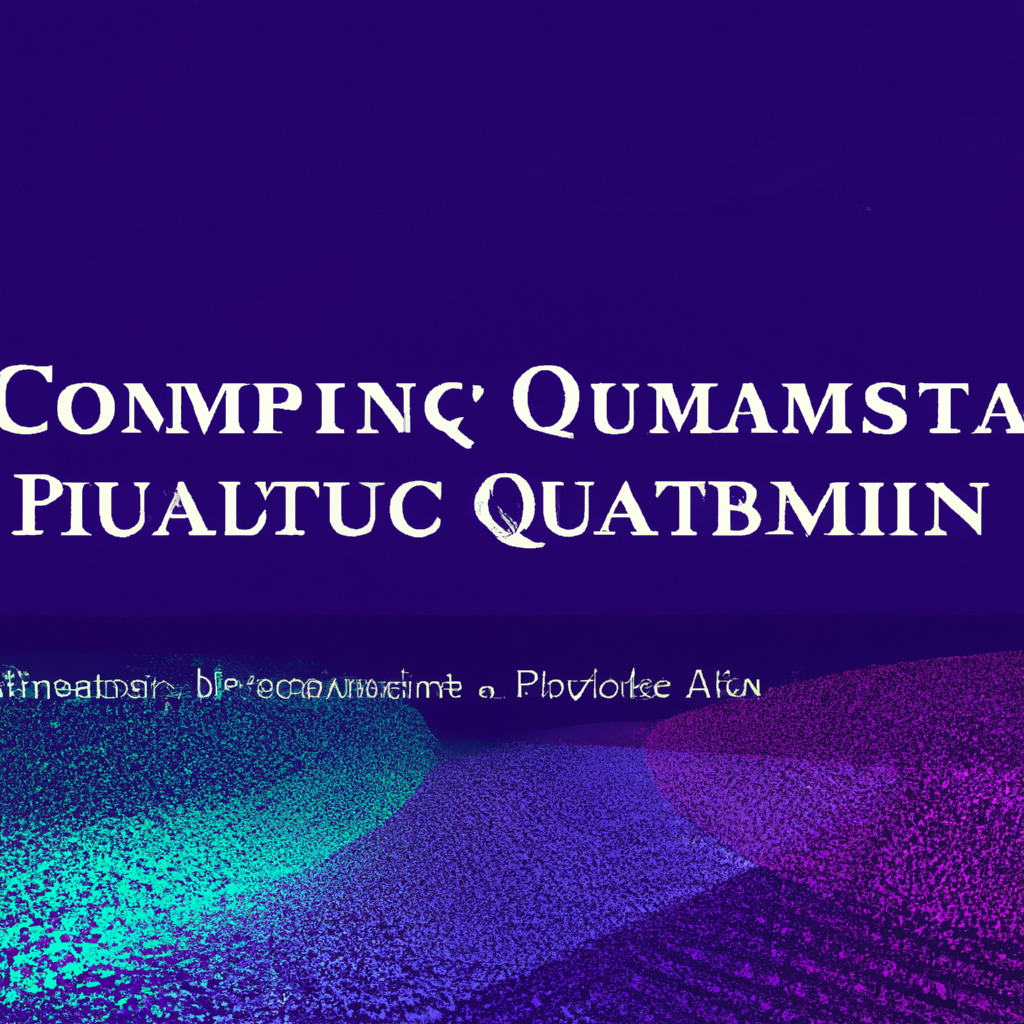Understanding the Principles of Quantum Computing in Cryptography
Table of Contents
Understanding the Principles of Quantum Computing in Cryptography
# Introduction
In recent years, quantum computing has emerged as a cutting-edge technology with the potential to revolutionize various aspects of computation. One area where quantum computing has garnered significant attention is cryptography. Cryptography, the science of encoding and decoding information, plays a pivotal role in ensuring secure communication and protecting sensitive data. With the advent of quantum computers, traditional cryptographic algorithms that rely on the hardness of certain mathematical problems can become vulnerable. Therefore, it is crucial for computer scientists and cryptographers to understand the principles of quantum computing in cryptography and explore new cryptographic techniques that can withstand the power of quantum computers.
# Quantum Computing Fundamentals
To comprehend the impact of quantum computing on cryptography, it is essential to grasp the fundamentals of quantum computing. Unlike classical computers that use bits to represent information as either 0 or 1, quantum computers utilize quantum bits or qubits. A qubit can be in a superposition of states, meaning it can simultaneously represent both 0 and 1. This unique property of superposition enables quantum computers to perform parallel computations and potentially solve certain problems exponentially faster than classical computers.
Quantum cryptography relies on two fundamental principles of quantum mechanics – superposition and entanglement. Superposition allows qubits to exist in multiple states simultaneously, while entanglement enables the correlation between the states of different qubits. These principles open up new avenues for secure communication and cryptographic protocols that are not possible with classical computers.
# Shor’s Algorithm and the Threat to Cryptography
One of the most significant breakthroughs in the field of quantum algorithms is Shor’s algorithm, proposed by Peter Shor in 1994. Shor’s algorithm exploits the capability of quantum computers to factor large numbers exponentially faster than classical computers. Factoring large numbers is a computationally intensive task and forms the basis of many cryptographic algorithms, such as the widely used RSA (Rivest-Shamir-Adleman) algorithm.
The security of RSA and other factoring-based cryptographic algorithms relies on the assumption that factoring large numbers is a difficult problem for classical computers. However, Shor’s algorithm poses a significant threat to the security of these algorithms by demonstrating that they can be efficiently broken by quantum computers. With enough qubits and quantum gates, Shor’s algorithm can factor large numbers in polynomial time, rendering the security provided by these classical cryptographic algorithms obsolete.
# Post-Quantum Cryptography
To address the vulnerability of classical cryptographic algorithms to quantum attacks, researchers have been actively exploring post-quantum cryptography. Post-quantum cryptography aims to develop cryptographic systems that remain secure even in the presence of powerful quantum computers.
One approach to post-quantum cryptography is lattice-based cryptography. Lattice-based cryptographic algorithms leverage the hardness of lattice problems, such as the Shortest Vector Problem (SVP), to provide security. These problems are believed to be resistant to attacks by both classical and quantum computers. Lattice-based cryptography offers a strong mathematical foundation and has been extensively studied, making it a promising candidate for post-quantum cryptography.
Another approach is based on code-based cryptography. Code-based cryptographic algorithms rely on error-correcting codes to create a trapdoor function that is hard to invert. These trapdoor functions form the basis for encryption and digital signature schemes. Despite their long history, code-based cryptographic algorithms have gained renewed interest due to their resistance against quantum attacks.
Multivariate polynomial cryptography is yet another avenue for post-quantum cryptography. Multivariate polynomial cryptographic algorithms utilize systems of multivariate polynomial equations to provide security. Solving these equations is computationally challenging, both for classical and quantum computers. Although these algorithms typically have larger key sizes, they offer robust security against quantum attacks.
# Challenges and Future Directions
While post-quantum cryptography shows promise, it also faces several challenges. One major challenge is the transition from classical cryptographic algorithms to post-quantum cryptographic algorithms. Replacing existing cryptographic systems with post-quantum alternatives requires careful consideration and standardization to ensure compatibility and interoperability.
Additionally, the practicality and efficiency of post-quantum cryptographic algorithms need to be further explored. Many post-quantum cryptographic algorithms are computationally more demanding than their classical counterparts, which can pose challenges for resource-constrained devices. Further research is needed to optimize these algorithms without compromising their security.
Moreover, ongoing advancements in quantum computing hardware and algorithms necessitate continuous evaluation and improvement of post-quantum cryptographic techniques. As quantum computers continue to evolve, new attacks and vulnerabilities may emerge, requiring the development of even more robust cryptographic systems.
# Conclusion
Quantum computing has the potential to disrupt the field of cryptography by rendering traditional cryptographic algorithms vulnerable to attacks. Understanding the principles of quantum computing in cryptography is crucial for developing secure communication protocols and protecting sensitive information in the post-quantum era. Post-quantum cryptography offers promising solutions by leveraging mathematical problems that are resistant to both classical and quantum attacks. However, several challenges need to be addressed to ensure a smooth transition to post-quantum cryptographic systems. Continued research and collaboration between computer scientists and cryptographers are essential to stay ahead of the curve and safeguard our digital infrastructure in the age of quantum computing.
# Conclusion
That its folks! Thank you for following up until here, and if you have any question or just want to chat, send me a message on GitHub of this project or an email. Am I doing it right?
https://github.com/lbenicio.github.io

